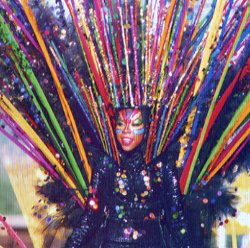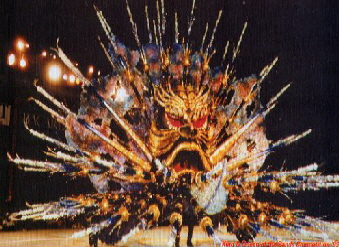|
Carnival's Parade of the Bands, the "Mas" starts on Monday with the great J'Ouvert procession of the big masquerade bands and on Tuesday when they reappear again at full strength, up to
4,000 strong in full costume. The bands compete for the Band of the Year title. Each band is organized into sections. In a large band there may be up to 20 sections with anything from 250 to 400
masqueraders in each. Each section depicts part of the overall theme in different colors or costumes, creating kaleidoscopic, panoramic effects. Leading the bands are the Kings and Queens. Fueled
by rum and driven on by the relentless pounding of the year's hottest calypso and soca sounds, masqueraders dance through the baking streets, past various judging points, until they reach the Savannah
Grandstand. Beer and rum flow as thousands of revellers leap and dance and daub each other with mud, grease or blue paint. At midnight on Tuesday, Carnival is over and on Wednesday morning the
revelers stagger back to work, the tourists go home and those left behind start preparing for next year's Carnival!
|


